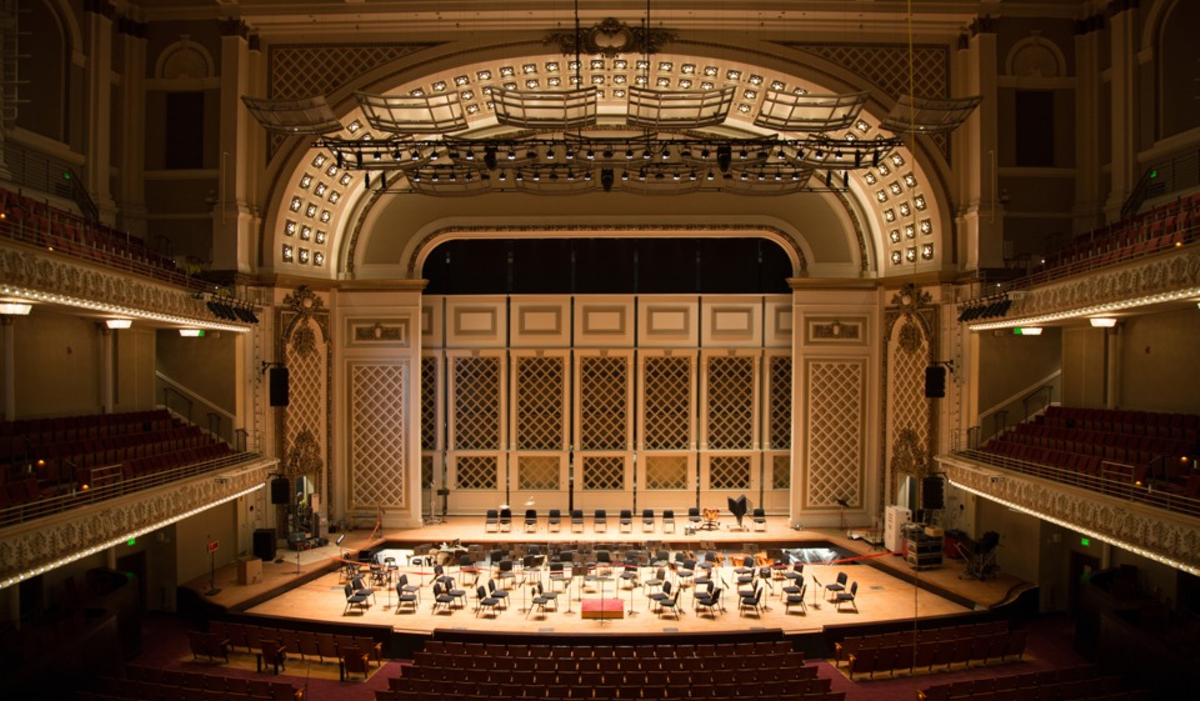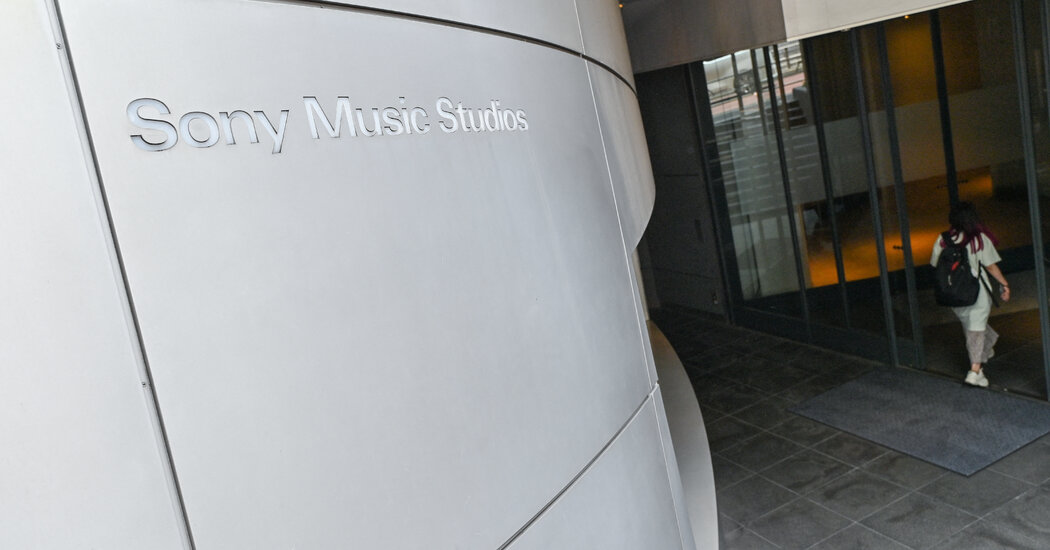
Since their closure in 2020 due to the coronavirus, American opera houses have been struggling to regain their financial footing—and their audiences. Most have reduced the number of performances they give and retreated to a repertoire of safe favorites. However, the Metropolitan Opera has taken a different tact by embracing untried contemporary works it hopes will appeal to younger, more diverse audiences. Recently released attendance data suggests that this Met initiative might not be working.
Bolstered by significant governmental support, European companies mostly appear to have returned to a pre-pandemic status quo. A recent visit to Germany found both the Hamburg and Berlin Staatsopers fearlessly mounting challenging operas of questionable popular appeal, but both Olivier Messiaen’s Saint François d’Assise and Modest Mussorgsky’s Chowanschtschina (better known in the U.S. as Khovanshchina) proved to be singular artistic and reasonably popular successes.
Written nearly one hundred years apart, both operas deal with rigorous religious beliefs and both require enormous resources from the theaters presenting them. Messiaen, one of France’s leading 20th-century composers, had never written an opera when in the early 1970s, Rolf Liebermann, then head of the Paris Opéra, commissioned him to create Saint François, his first and only opera and one he struggled for more than a decade to complete. A devout Catholic, he toyed with setting Christ’s Passion which he eventually found too daunting and settled instead on the life and death of Francis of Assisi, the early 13th-century saint.
SEE ALSO: PAMM Chief Curator Gilbert Vicario On the Museum’s Momentous Group Show of Xicanx Art
Messiaen intently studied Francis’s life, including visits to Assisi, and though the vows of ascetic Franciscans, the religious order founded by the saint, focused on poverty, chastity and obedience, the composer-librettist created a four-hour opera that demanded huge resources. The program for Hamburg’s production listed an orchestra of 110 and a chorus of 125, plus nine vocal soloists. Saint François, long a favorite of Hamburg’s music director Kent Nagano, proved too large for the relatively modest Staatsoper, so it was presented in a semi-staged production at the large concert hall of Elbphilharmonie, an awe-inspiring structure constructed on top of an old warehouse on Hamburg’s waterfront that opened after many delays and cost overruns in 2017.
For Saint François, director Georges Delnon and his designer Thomas Jürgens thoroughly utilized the Elbphilharmonie’s notable surround-seating design with the chorus filling the audience seats behind the orchestra platform with Jacques Imbrailo, the South African baritone portraying the title character, inhabiting a high round platform soaring over the orchestra. Other performers, including Anna Prohaska as The Angel who appears to Francis, often darted about the auditorium while on a cylinder suspended over the proceedings a video which also contained a German translation of the French text played throughout the entire work.
While Delnon’s economical direction drew intensely focused performances from the soloists, his video which depicted actors aimlessly wandering around contemporary Hamburg sites grew so monotonous and unilluminating that I began to ignore it. While one appreciated Delnon’s urge to provide some visual stimulation during the opera’s eight lengthy tableaux, his inexpensive, unimaginative solution ultimately proved a distraction.
Most of Messians’s libretto is aggressively anti-dramatic. The meditative opera begins after Francis’s conversion and contains little action beyond the riveting scene that concludes the first act in which Francis cures a leper. Anthony Gregory’s searing portrayal of the tortured man contrasted markedly with Imbrailo’s unflappable serenity.
Replacing the originally announced Johannes Martin Krãnzle late in the day, the singer always sang from his iPad on a music stand in front of him. His tireless, soft-grained lyrical baritone and sensitively clear French diction fell pleasingly on the ears throughout the long evening. Among the six brothers who interact with Francis, baritone Kartal Karagedik as Frère Lêon stood out for his hearty earnestness and attractively mellow baritone. Prohaska started weakly with sometimes unsteady long-breathed pronouncements delivered from all over the auditorium. She was at her best in the later scenes especially in the second act when the disguised Angel arrived to quiz the monastery’s brothers.
Messiaen’s vocal writing consists of lyrical recitative that mostly avoids extremes of range and dynamics. The score’s most effective pages feature intensely dramatic and fantastically inventive writing for the huge orchestra and chorus. The composer consistently surprises with the most unusual colors ranging from softly soothing evocations of bird songs to thunderous soul-shaking choral outbursts.
The static plot as well as the score’s length and demands have limited the opera’s opportunities since its 1983 Paris premiere. Pamela Rosenberg bravely scheduled the work’s only U.S. performances in 2002 during the first year of her ambitiously brief tenure at the San Francisco Opera. In his early years at the Met, Peter Gelb talked about mounting the work with Eric Owens in the title role, but financial concerns clearly doomed that project which hasn’t been again mentioned in years.
But the Hamburg Staatsoper and its resident Philharmonisches Staatsorchester pulled off an awesomely impressive local premiere of just three performances, clearly as a nod to Nagano who will be stepping down from his Hamburg duties at the end of next season. His cooly unflappable presence on the podium drew virtuosic playing from his fiercely committed orchestra even when Messiaen’s imagination waned during the endless “Sermon to the Birds” which closes the second act. Not everyone who initially filled the house remained at the end more than five hours later, but those who did gave Nagano a hero’s loud and long ovation.

An equally intent and enthusiastic audience several days later in Berlin cheered Claus Guth’s new puzzling yet gripping post-modern staging of Mussorgsky’s unfinished work about the complex religious and political emergency that embroiled late 17th-century Russia. While most of Guth’s staging cleanly and clearly presented the internecine conflicts between factions, he introduced intrusive contemporary figures clad in Pepto-Bismol pink—perhaps made of fabric left over from Carrie Cracknell’s recent Met Carmen?
Throughout the performance, one of those typed helpful historical notes projected onto a screen until her “project” was aborted for unexplained reasons. At times the pink interlopers seamlessly rearranged details of the historical recreation while shooting live video of the action, images that were projected to the audience on the vast nearly empty black set. The separation between the two time-frames collided when Ivan Khovansky during his slaughter of dancing dervishes also slayed one of the pink crew.
The opera’s action was framed by a hyper-real setting of a contemporary president or premier’s official office containing a large statue of Peter the Great being fussed about by a busy lackey. This tableau returns briefly at the very end presumably to suggest that things have not changed all that much: a simplistic comment that robbed the pathos from the haunting scene of the Old Believers’s self-immolation. Guth did everyone a disservice by undercutting the moving intensity he’d so skillfully conjured all evening.
[embed]https://www.youtube.com/watch?v=7r5BwdT0cY8[/embed]
Using Dmitri Shostakovich’s orchestration but including Igor Stravinsky’s version of the final scene, Guth and conductor Simone Young thrust their audience headlong into the violent clashes that obsess the characters and if every twist wasn’t immediately clear, helpful explanations filled the Staatsoper’s typically thorough and illuminating program.
Young, who rarely gets much love at the Met, drew colorful and soulful playing from her accomplished orchestra and the chorus, which dominates this opera much as it does Mussorgsky’s other masterpiece Boris Godunov, covered itself in glory singing with fearsome dynamic variety and acting with wrenching pathos (often projected in stage-filling close-ups reminiscent of films by Sergei Eisenstein).
Basses Mika Kares and Taras Shtonda dominated the performance as ferocious opponents Iwan Chowanski and Dossifei. A dynamic Kares embraced Iwan’s flamboyant excesses with a booming voice and a larger-than-life ebullience. Replacing the originally announced Ferrucio Furlanetto, Shtonda took a more restrained approach that suited the powerful religious leader, and he too thundered over the orchestra and chorus with potent steadiness. George Gadnidze, who regularly appears at the Met in Italian roles like Rigoletto and Scarpia, brusquely seized his opportunity to shine in Schklowity’s brutal monologue.
As spoiled Andrei Chowanski, Najmiddin Mavlyanov made his petulant whining so vivid that it was a shock when he briefly sang very beautifully as his privileged life began to crumble. Staatsoper veteran Stephen Rügamer made Golizyn’s dramatic fall from grace palpable, though his still-strong tenor has clearly seen better days. Anna Samuil, another Staatsoper stalwart, raged effectively as the fanatical Susanna though a more dramatic soprano might have been more effective. Evelin Novak’s brightly soaring high notes made much of Emma’s brief physical struggle with Andrei.
But the revelation of Chowanschtschina was the riveting Marfa of smoldering Russian mezzo Marina Prudenskaya, a versatile star throughout Europe but one who remains virtually unknown in the U.S. Her darkly smoky voice rises easily from deep contralto richness to securely shining high notes. She embodied the fascinatingly complicated extremes of Marfa who can predict the future for Golizyn but cannot see that Andrei, with whom she is helplessly in love, is a selfish scoundrel. Tall and striking, she was compulsively watchable, and her near-ideal Marfa made one eager to hear her in her acclaimed Verdi and Wagner roles.
Saint François d’Assise and Chowanschtschina displayed the kind of expensive epic opera that we rarely experience these days in the U.S. Will that ever change? Unfortunately, current indicators aren’t very encouraging.



